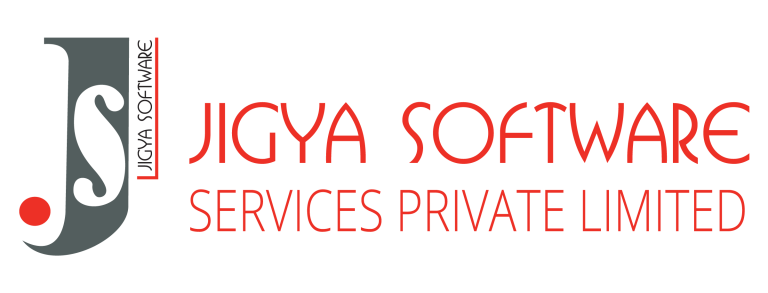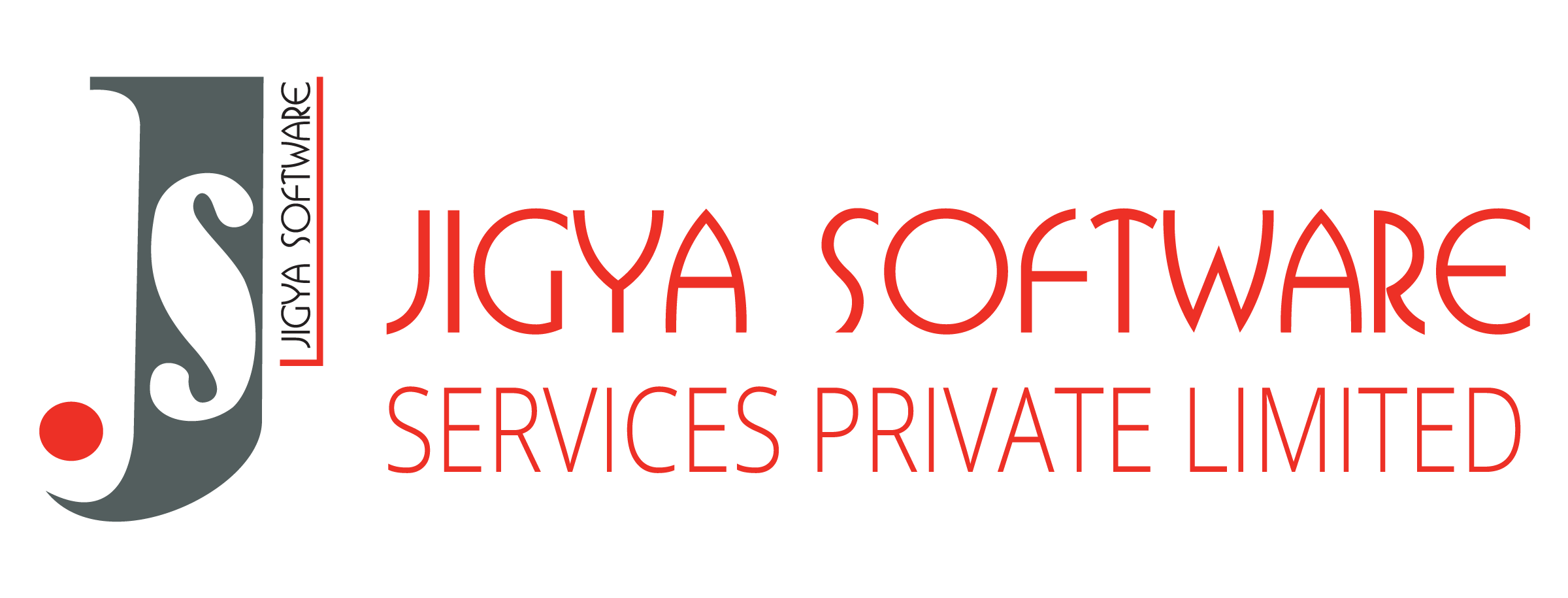Crafting and implementing a successful talent acquisition strategy is important in securing qualified candidates for your team. Our 20 hiring tips will give you a robust candidate sourcing approach. After reading our comprehensive hiring tips you would not only be able to streamline hiring process but also enhance retention rates and foster positive candidate experiences. The significance of hiring transcends routine interviews; it demands finesse, meticulously outlined in these hiring tips. Building a high-performing and contented team depends on good recruitment. One misstep, often coined a “hiring mistake,” can cascade into an arduous journey of rectification.
“Recruiting strategies that were once ‘good enough’ are now looking threadbare and tired.”
Why our Hiring Tips Matter
Understanding the essential role of our hiring tips is fundamental for building a resilient workforce. A strategic recruitment plan not only draws in top candidates but aligns them with the company’s ethos, fostering a harmonious workplace. We at Jigya Software Services have been providing RPO services globally for 25+ years, building strong connections all around the world.
Positive interactions during recruitment can cultivate enthusiasm among candidates, increasing the likelihood of accepting offers or exploring future opportunities within the company. Additionally, candidates, having had a positive experience, may become advocates, referring others eager to join a company renowned for its seamless and enjoyable recruitment processes. This is the reason for the past 20+ years our clients have placed their trust on our services and solutions here at Jigya Software Services, an Orpine Group Company.
So here are the Hiring Tips that are going to refine and redefine your workplace.
Hiring TIPS
1. Resist Rushing the Hiring Process
Hiring tip number 1. In the face of vacant positions and stretched workloads, the impulse to fill the gap quickly can be tempting. But remember, a hasty hire is often a shaky hire. Taking the time for a deliberate, well-structured process allows you to uncover hidden gems and avoid costly mismatches. Think of it as an investment in your future: the time spent upfront translates to a team that thrives and a bottom line that sings.
2. Crafting Candidate Persona
Before casting your net, paint a vivid picture of your ideal candidate. Enter the world of candidate personas – detailed profiles that capture the characteristics, skills, and experiences you seek. These personas become your guiding light, informing your sourcing strategies, interview questions, and ultimately, your decision-making. No more gut feelings and lucky hunches – data-driven personas ensure you attract the right talent, not just the loudest voices.
And don’t underestimate the power of a clear, concise job description. This isn’t just a formality; it’s a conversation with potential recruits. It speaks to who you are and what you value, while outlining the role’s demands and rewards. Think of it as a compelling advertisement that attracts individuals who resonate with your company culture and can excel in the specific environment you cultivate.
Remember, a well-crafted “JD” serves a dual purpose: attracting the right talent and filtering out the unsuitable. Be upfront about expectations – mention requirements like weekend work, travel demands, or late-night hours. This pre-interview screening saves you valuable time and resources, weeding out those who wouldn’t be a cultural fit or wouldn’t thrive in your dynamic environment.
“The talent supply problem will likely persist long-term, according to the recent Hiring and Workplace Trends Report 2023 from Indeed and Glassdoor.”
3. Step away from the Screen, Build In-Person Connections
While online recruiting platforms offer a vast pool of candidates, there’s something irreplaceable about meeting potential recruits face-to-face. Consider stepping outside the digital realm and attending industry conferences, seminars, or even job fairs. These events offer a unique opportunity to engage with passionate individuals, gauge their skills and personality firsthand, and discover hidden gems who might miss your online radar.
These in-person interactions allow you to ask insightful questions, observe body language, and understand a candidate’s motivations beyond their resume. You can assess their cultural fit, communication skills, and overall presence – crucial aspects that often get lost in the online shuffle. Remember, the right hire isn’t just about technical competence; it’s about finding individuals who align with your vision and bring a spark of energy to your team. This is our 3rd hiring tip for your recruitment team.
“According to new benchmarking data from the Society for Human Resource Management (SHRM), the average cost per hire was nearly $4,700. “
4. Use Collaborative Recruiting
Let’s face it, going it alone in the talent hunt can be a Herculean task. That’s where the magic of collaboration comes in. When you forge a strong partnership with your recruiting team, you unlock a wealth of expertise and reach. Kick off the process with a joint session to clearly define the ideal candidate profile for your open position. Be specific! Outline not just technical skills, but desired cultural fit, personality traits, and even potential career aspirations. Sharing this clear vision ensures everyone is on the same page, from sourcing to final selection.
But collaboration doesn’t end there. Actively participate in the talent search. Take the initiative to suggest potential candidates who embody your vision, demonstrating the types of profiles you’re looking for. Remember, your insights from within the team are invaluable to your external recruiting partners. Maintain constant communication, sharing feedback on candidates and keeping your recruiter informed of your preferences as the search progresses. This synergy ensures a talent pool tailored to your specific needs, saving you both time and frustration. Our staffing and recruitment solutions have helped our clients in various fields ranging from Software development, HRMS and Staff Augmentation, ATS, Software Consultancy and much more!
“Using an RMS takes care of all your major hiring tasks. These HRMS Solutions lead to excellent team management and hiring practices”
5. Mastering Prerequisite and trainable Skills
Fifth Hiring tip! Forget the one-size-fits-all approach to skills. Instead, orchestrate a harmonious blend of “must-haves” and “can-learns.” Identify the non– negotiable core skills – the prerequisites that form the role’s foundation. These could be industry-specific expertise, software proficiency, or even essential communication abilities. Ensure candidates come to the table equipped with these fundamentals.
Now, let’s add a layer of versatility with trainable skills. These are the areas where potential can blossom under your guidance. Perhaps it’s mastering a new technology stack, honing analytical skills, or developing advanced project management expertise. Look for candidates who demonstrate a willingness to learn and grow, eager to embrace the opportunities for skill development your organization offers. Remember, nurturing raw talent and unlocking hidden potential can yield incredible results.
By balancing prerequisite and trainable skills, you build a team that’s both immediately impactful and equipped for long-term growth. You attract individuals who hit the ground running while harboring the potential to continuously evolve and adapt alongside your organization’s dynamic journey.
6. Craft Outreach Messages That Captivate
Gone are the days of generic, cookie-cutter outreach messages. In today’s competitive talent landscape, you need to woo potential candidates with personalized enticements. Think of your first message as the opening act of a captivating play. The subject line sets the tone – make it intriguing, specific, and relevant to the candidate’s background.
“Expand your candidate search beyond borders with video conferencing, reaching top talent anywhere.”
Once you’ve caught their attention, delve into the specifics. Highlight what impressed you about their credentials, showing that you’ve taken the time to review their profile. This personalized touch shows genuine interest and sets you apart from the onslaught of impersonal outreach emails.
Next, paint a vivid picture of the open role and your organization. Don’t just list responsibilities; tell a story about the culture, the team, the impact of the work. Connect their potential contributions to the larger vision, showcasing how their skills and passion can truly make a difference. Finally, express your conviction in their potential. Conclude your message by encouraging them to learn more and take the next step in this exciting journey together.
Read our detailed blog on Guide To Video Interviewing for more video interviewing foresight.
7. Review Previous Applicants
Let’s face it, not every candidate finds their perfect fit in every role. But that doesn’t mean they should fade into the shadows. Instead, embrace the power of the talent archive. Build a robust recruitment database, a treasure trove of previously encountered melodies waiting for the right arrangement. As new roles emerge, dive back into this archive, not just for familiar refrains, but for hidden harmonies. Could that candidate who narrowly missed the marketing manager role be the candidate for social media marketing? Remember, revisiting past applicants isn’t a sign of desperation; it’s a testament to your commitment to finding the ideal fit, regardless of when the right score presents itself.
8. Use Technology: Applicant Tracking System
Gone are the days of paper folders and cryptic spreadsheets. Embrace the transformative power of technology! Consider implementing Applicant Tracking Systems (ATS) by GoHireTech in your HRMS systems to become a maestro of talent organization. These systems are your digital orchestral pit, seamlessly orchestrating the flow of applicant information, ensuring secure storage and efficient processing. By meticulously classifying your talent pool based on skills, aspirations, and experiences, you create a searchable symphony, ready to deliver the perfect candidate for any new concerto. Imagine the time saved, the frustration averted, as you effortlessly select the ideal voice for each emerging role, all thanks to the magic of technological baton-wielding.
“Job seekers are both exceptionally limited in supply and increasingly discerning in their demands.”
9. Cultivate A Talent Pipeline
Your sourcing pipeline is a system containing all the information of candidates who previously applied for open jobs. Continuously revisit your talent pipeline, attracting and retaining a diverse array of talents. Keep adding candidates into this pipeline. Even if they’re not ready to join the main stage just yet, include not only qualified candidates who weren’t quite the right fit for current roles but also potential hires who may be in the earlier stages of their professional journey. Perhaps that recent graduate brimming with potential isn’t quite ready for your job yet, but they could be the perfect trainee. By actively cultivating this talent reservoir, you create a resource-rich ecosystem, ensuring a steady flow of potential when the next recruitment process begins.
10. Embrace Flexibility to Win Over Candidates
Time is precious for every candidate. Show them you value their time by embracing flexibility. Instead of rigid scheduling demands, offer a brief fifteen-minute phone call to discuss the role and their aspirations. Give them several options throughout the week, making them feel heard and respected. This simple act of acknowledging their time speaks volumes about your company culture, laying the foundation for a positive first impression. Remember, a candidate who feels valued is a candidate more likely to resonate with your team. Our Tenth Hiring tip is sure to improve the way you hire.
11. Candidates seek Reputation, Build Your Brand
“Hire the most qualified individuals by adopting Candidate- Centric Recruiting.”
A company’s brand image plays an important role in attracting the right talents. Cultivate a strong and positive reputation by ensuring consistency across social media and hiring platforms. Monitor your online reviews – respond gracefully to any negative reviews, take ownership and outline concrete steps to address the concerns. Encourage your current employees to be vocal brand ambassadors, sharing their positive experiences and painting a vibrant picture of your company culture. Remember, word-of-mouth recommendations hold immense power – invest in crafting a score that resonates with the right performers.
12. Track Your Data Driven Metrics
After each hiring cycle, perform data-driven analysis of your recruitment process. Track your metrics with precision – how many outreach attempts yielded responses? What communication channels resonated most effectively? This insightful analysis allows you to refine your future interactions. Similarly, analyze your talent sourcing channels – where did you find your highest performers? Double down on these channels, ensuring a steady flow of skilled workforce. That is where Orpine’s Big Data Analytics shines in limelight. Orpine’s Big Data Analytics offers a nearly endless source of business and informational insight, that can lead to operational improvement and new opportunities for companies to provide unrealized revenue across almost every industry.
13. Use the Virtual World to Cast a Wider Net
While job boards remain useful, relying solely on them limits your talent pool. Expand your reach by venturing into the digital wilderness! Leverage the power of social media platforms like LinkedIn and even niche communities like inbound.org to actively search for qualified candidates. Don’t just post your listings – proactively connect with individuals whose profiles align with your ideal candidate persona. A personalized message highlighting their potential fit can be much more persuasive than a generic job posting. Remember, candidates often respond better to hiring managers than recruiters, so don’t underestimate the power of a direct approach. And hey, even if they’re not ready to jump ship, their response provides valuable market insights.
“ATS automate applicant data collection and organization, saving recruiters valuable time.”
But your journey doesn’t end online. Tap into employee referrals! These individuals come pre-vetted by your own trusted team members, ensuring longer tenures and faster onboarding times. Consider posting your job description across your social networks and engaging your colleagues in spreading the word. There’s no safer bet than someone you trust recommends, minimizing risk and fostering a culture of collaboration.
14. Plant Those Seeds for Future Candidates
This hiring tip will future proof your hiring. Looking for your next star candidate shouldn’t wait until a position opens. While interviewing for current roles, keep an eye out for individuals who suit your company culture and have skills beyond the immediate need. Document their details – they could be the perfect fit for a future opportunity. Actively tracking potential matches strengthens your talent pipeline and ensures you’re ready to seize opportunities when they arise. Remember, proactive talent scouting is an investment in your future, saving you time and ensuring a constant influx of fresh perspectives.
15. Experimenting Testing Strategies
Don’t be afraid to experiment with different sourcing strategies to discover what resonates with specific candidate segments. Track your results meticulously, noting what attracts the best talent. Repetition is key here – replicate successful strategies for future positions and you’ll refine your approach over time.
Writing skills are essential for any marketing role. So, why not test them right from the start? Assigning concise written exercises like blog posts, mock case studies, or competitive battlecards is a low-effort, high-reward way to gauge a candidate’s potential and interest. These real-life scenarios offer valuable insights into their thought process, writing prowess, and overall fit for the role. Remember, effective sourcing is a dynamic process. Embrace experimentation, analyze results, and constantly refine your approach.
16. Plan Like a Pro. Make Your Screening Meeting Flawless
The initial 30-minute screening call can be a pivotal pivot point. It’s your opportunity to efficiently assess the candidate’s potential, separating promising one’s from those who won’t make the cut. But navigating this brief encounter effectively requires a well-defined strategy.
Before the call, invest in crafting a robust set of questions.
Go beyond generic questions; mix skill-based assessments, behavioral questions, and thought-provoking critical thinking questions. Develop a standard of core questions, providing a benchmark for evaluating performance across the whole candidate pool. However, don’t underestimate the power of personalization. Delve deeper into areas where the resume and online review left you with lingering questions. Remember, this is your chance to refine your understanding and extract valuable insights.
At the same time resist the urge to depend upon scripted, pre-determined questions. Instead, view your list as a guide, facilitating a natural conversation. Actively listen, allowing the candidate’s responses to shape the flow of the dialogue. If the conversation veers off track, skillfully transition to new topics using phrases like, “Thank you for your insights on [topic]. Now, let’s explore [topic]” Remember, a fluid conversation acts as a powerful tool, revealing the candidate’s true potential and shedding light on their communication skills.
As the call concludes, take a moment to assess your overall impression. Do you feel a genuine interest in further exploring this candidate’s potential? If not, politely communicate your decision in a timely manner, outlining the reasons why they wouldn’t be a good fit. However, if the conversation sparked your enthusiasm, move them forward in the process. While uncertainties regarding specific skills or experience might remain, the next step will offer another valuable data point in your evaluation process.
17. Optimize Interviewing Process with a Team
This hiring tip looks simple but isn’t. Read on and make your Interviewing Game flawless. Here’s how to orchestrate an interview that produces insightful feedback and leads you to the right hire:
1. Composing the Interview Team:
While your direct team and supervisor are crucial stakeholders, remember, the candidate’s future success depends on collaboration across departments. Include individuals they’ll interact with regularly – engineers for a developer role, marketers for a content creator, and so on. Their involvement fosters a welcoming environment and provides valuable insights into potential compatibility. Consider also adding individuals known for their strong interviewing skills or those who can assess specific skillsets like analytical thinking or cultural fit. This diversity of perspectives ensures a comprehensive evaluation.
2. Teaming up for Candidate Insight
Once the team is assembled, delve deeper into the candidate’s profile. Share their background, strengths, and any remaining uncertainties with the interviewers. Discuss how individual strengths can be leveraged to probe deeper into specific areas, maximizing collective time and eliminating overlaps. Prepare a document outlining the candidate’s profile, key competencies to test, and specific areas each interviewer should focus on. This ensures focused questioning and a streamlined experience for the candidate.
“If you are hiring a candidate for a $60,000 job, you may spend $180,000 to fill that role. “Of the costs, I would say 30% to 40% are hard costs, and other 60% are soft costs”- Eldie Goldberg, Founder of Menlo Park, Calif.-based talent management and development company E.L. Goldberg & Associates and co-author of the book The Inside Gig (2020)”
3. Conducting the Interview
Individual preparation remains key for each interviewer. Provide example questions for those less experienced, ensuring a consistent yet diverse questioning style. Consider this structure:
- Resume Review: Briefly review the resume, allowing the candidate to showcase their relevant experience within a couple of minutes.
- Job Interest: Gauge their understanding of the role and company by asking why they’re interested. Assess their research and passion for the opportunity.
- Behavioral Questions: Craft questions based on the resume or potential challenges in the role. Explore past actions and outcomes to understand their approach to problem-solving and decision-making.
- Case Studies: Utilize open-ended case studies to assess critical thinking, marketing acumen, and their ability to navigate ambiguity. Consider sharing examples relevant to your industry or department.
Remember, allow time for the candidate to ask questions too. Their level of preparation and the thoughtfulness behind their inquiries reveal their problem-solving approach and level of comfort in taking the lead.
“Gain data-driven insights from applicant pools, optimizing your selection process using ATS.”
4. Gathering Feedback
As the hiring manager, you lead the final decision, but the interview team’s diverse perspectives are invaluable. Take their feedback seriously, but remember, not every concern carries equal weight. Analyze their feedback thoughtfully, considering whether it aligns with your own observations and the overall candidate profile. If uncertainties remain, conduct additional interviews, assign further assessments, or check references. Remember, reducing risk is paramount, so ensure everyone feels confident about the decision before extending an offer.
By assembling a diverse team and conducting a well-structured interview, you transform candidate evaluation from a chaotic solo act into a harmonious symphony of insights. This collaborative approach ensures you uncover the hidden potential within each candidate, paving the way for building a team that takes your organization to new heights.
18. Realize The Power of Communication
Effective communication underpins every stage of the candidate’s journey. Promptly follow up with all contacted individuals, regardless of the final decision. This demonstrates professionalism and respect, even when delivering the news of an unsuccessful application. Remember, the faster you communicate, the better. No one appreciates lingering in uncertainty.
Making a job offer can be the culmination of your efforts, but it’s also an opportunity to solidify your commitment to transparency. Be prepared to discuss offer details, including salary, during the initial conversation. If someone else will finalize the terms, inform the candidate upfront about the timeframe and contact person. Conversely, delivering rejection requires careful consideration. Tailor your approach to the candidate’s personality and your existing relationship. Offer constructive feedback when appropriate, remembering the potential you saw in them and the value of helping them develop.
19. Recruit Using Your Employees
Implement an employee referral program that incentivizes them to recommend qualified candidates. Financial rewards like bonuses are common but consider additional incentives like public recognition or team outings. Employee-referred candidates often boast impressive qualifications and cultural alignment, offering a sense of confidence in their performance and fit.
Moreover, look within your own organization for potential internal promotions. Review current employees’ skillsets and qualifications and consult with departmental managers to identify individuals who could thrive in open roles. Existing employees have the advantage of familiarity with your company culture and operations, minimizing training and onboarding costs while accelerating productivity.
20. Embrace Innovative Technology
Our final hiring tip is about technological advancements. Recruiting technology and databases equipped with automation capabilities can be powerful allies in sourcing suitable candidates. These tools scan databases and professional profiles, identifying individuals whose qualifications mirror your job requirements. Automation streamlines the initial applicant review process, allowing you to focus on the most promising candidates. However, remember that technology is just one piece of the puzzle.
The classic resume remains a valuable tool, showcasing a candidate’s ability to market themselves for the position. Look for resumes that tell a compelling story with your open role as the natural next chapter. Conciseness, effective writing, data-driven accomplishments, and a record of successful goal achievement are all positive indicators. Once a resume piques your interest, go beyond its surface. Utilize online resources like social media profiles, websites to gain a deeper understanding of the individual.
CONCLUSION
Concerns about attracting the wrong talent stem from a fundamental question: are we using efficient strategies for evaluation? Subjectivity in the recruitment process hinders accurate assessment and can lead to costly mis-hires. By implementing an objective framework grounded in measurable criteria, we at Jigya Software Services empower hiring managers to make informed decisions based on concrete evidence, not intuition. This strategic shift not only enhances hiring accuracy but also optimizes resource allocation, minimizing both financial and operational constraints. Invest in a good Hiring strategy, use the hiring tips listed above and reap the rewards of a team that consistently delivers excellence.




